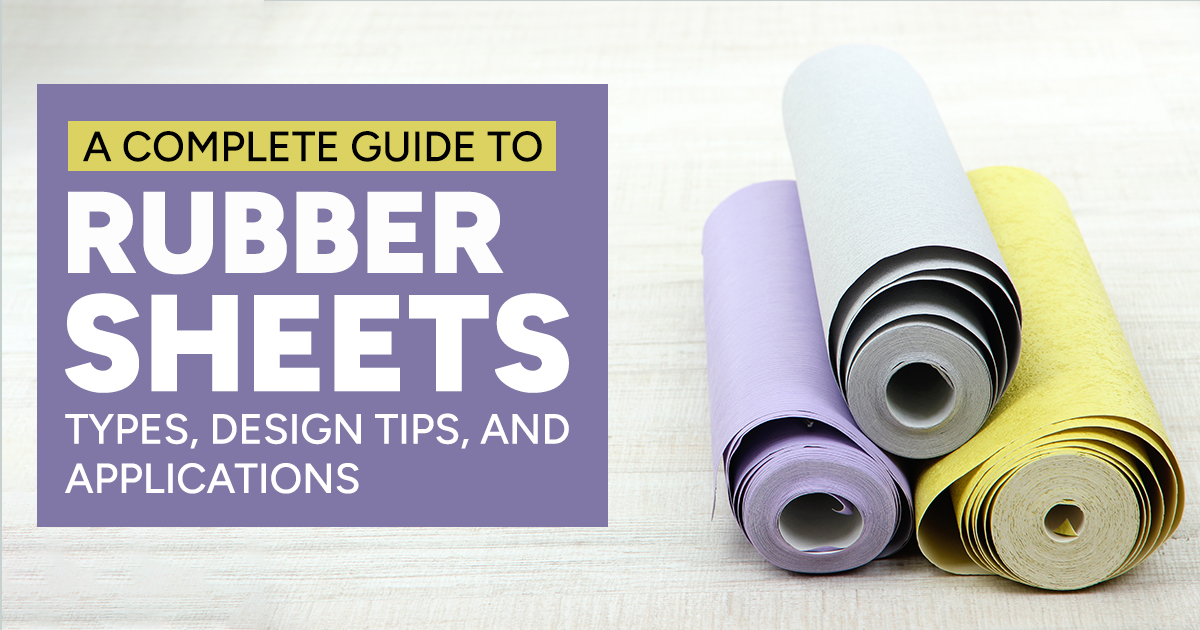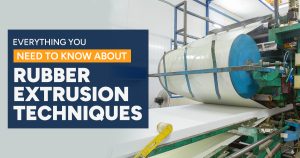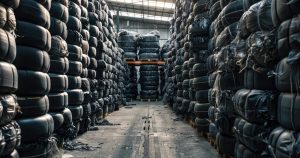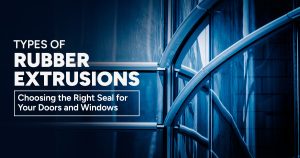Rubber sheets may seem like a simple product, but behind their smooth surface lies a world of versatility and innovation.
From industrial machinery to creative design projects, rubber sheets are a fundamental component that enhances durability, safety, and flexibility. In this guide, we dive into the different types of rubber sheets, share practical design tips, and explore their diverse applications, all in plain and engaging language.
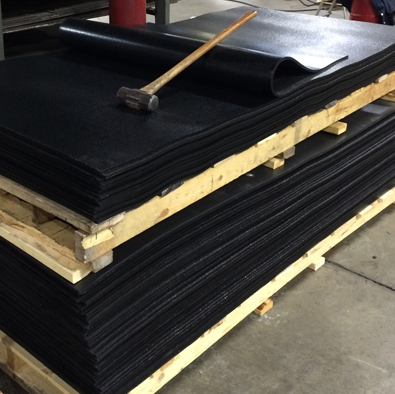
What are Rubber Sheets?
Rubber sheets are thin layers of flexible material that are manufactured using various types of rubber. They are engineered to offer resistance to wear, tear, chemicals, and weather conditions, making them ideal for a wide range of uses. The ability of these sheets to withstand harsh environments while maintaining their elasticity makes them indispensable in numerous industries.
Beyond the functional benefits, the aesthetic appeal of rubber sheets is gaining attention. Their smooth, uniform texture and availability in different colors and thicknesses allow designers and engineers to incorporate them into projects that need both style and substance.
Exploring the World of Rubber Sheets
Rubber comes in many forms, and so do rubber sheets. Understanding the types available is key to choosing the right material for your project. Here are some of the most common varieties:
Natural Rubber Sheets
Derived from the sap of rubber trees, natural rubber sheets have been used for centuries. They are prized for their excellent elasticity, resilience, and high tensile strength. Natural rubber is particularly suitable for applications where flexibility and durability are essential, such as in industrial settings and heavy-duty equipment.
Synthetic Rubber Sheets
Developed through chemical processes, synthetic rubber sheets offer benefits that natural rubber might not provide. They are engineered to withstand extreme temperatures, exposure to chemicals, and prolonged use without losing performance. Common types include:
- Neoprene: Known for its oil and weather resistance, neoprene is popular in automotive applications and outdoor equipment.
- Nitrile: Excellent for resisting oils, fuels, and other chemicals, nitrile rubber sheets are often used in automotive parts and industrial seals.
- EPDM (Ethylene Propylene Diene Monomer): Favoured for its resistance to ozone and UV radiation, EPDM is perfect for outdoor applications like roofing and pond liners.
- Silicone Rubber: Offering superior flexibility in extreme temperature ranges, silicone rubber is often used in electronics and medical devices.
Each type has its unique characteristics, making it essential to match the material to the requirements of your specific project.
Design Tips to Work with Rubber Sheets
Designing with rubber sheets can transform a functional component into a visually appealing part of a project. Here are some creative tips to make the most out of this adaptable material:
1. Choose the Right Thickness
The thickness of a rubber sheet determines its strength and flexibility. For applications requiring heavy-duty use, opt for thicker sheets that provide extra durability. Conversely, thinner sheets can be used for applications where flexibility is paramount, such as in protective covers or vibration-dampening pads.
2. Experiment with Colors and Textures
Rubber sheets are available in a variety of colors, allowing you to blend them into your design seamlessly. Consider using contrasting colors to create striking visuals or match the sheets with the overall color palette of your project for a cohesive look. Textured rubber sheets can also add a tactile dimension, making the design both functional and aesthetically engaging.
3. Combine with Other Materials
Pairing rubber sheets with other materials such as metal, wood, or fabric can result in innovative designs. For example, using a rubber sheet as a non-slip surface in conjunction with a wooden floor creates a harmonious blend of natural and engineered materials. This combination is particularly popular in modern interior designs and industrial applications.
4. Focus on Sustainability
Designers are increasingly focusing on eco-friendly practices. Look for recycled rubber sheets or those produced through sustainable processes. This not only reduces environmental impact but also adds a unique story to your product design, appealing to environmentally conscious customers.
Applications
Rubber sheets play a pivotal role across many sectors due to their adaptability. Here are a few prominent areas where these sheets make a significant impact:
Industrial and Manufacturing
In industrial settings, rubber sheets are used for creating seals, gaskets, and liners. Their ability to resist harsh chemicals and extreme temperatures makes them ideal for use in manufacturing plants, automotive assembly lines, and machinery.
Construction and Infrastructure
The construction industry benefits greatly from rubber sheets. They are commonly used for roofing, waterproofing, and even as vibration-dampening layers under floors. Their resistance to weather elements ensures longevity and reduces maintenance costs.
Automotive and Transportation
From engine mounts to tire treads, rubber sheets contribute to the safety and efficiency of vehicles. Their excellent shock absorption and flexibility help reduce vibrations and enhance ride quality.
Sports and Recreation
Rubber sheets find their way into sports facilities as floor coverings in gyms, playgrounds, and indoor courts. They offer a cushioned surface that minimizes injuries and provides a consistent, slip-resistant platform for athletes.
Creative and DIY Projects
The artistic side of rubber sheets is often overlooked. Designers and DIY enthusiasts use these sheets to craft unique home decor items, custom flooring, and even wearable art. Their versatility opens up endless possibilities for creative expression.
Innovations and Trends in the Rubber Sheet Industry
The rubber sheet industry is evolving with technology and changing consumer demands. Here are some trends shaping the future:
Advancements in Material Science
Ongoing research in material science has led to the development of rubber sheets that are not only stronger but also lighter and more resistant to environmental factors. These advancements mean that today’s rubber sheets can outperform their predecessors in almost every aspect.
Eco-Friendly and Recycled Options
Sustainability is more than just a buzzword; it’s a necessity. Many manufacturers are now focusing on producing rubber sheets from recycled materials. This innovation is reducing waste and promoting a circular economy where materials are continually reused.
Customization and Versatility
Modern manufacturing techniques allow for high levels of customization. Whether you need a specific thickness, color, or texture, advances in production methods make it easier to tailor rubber sheets to meet exact specifications. This flexibility is particularly beneficial for designers and engineers who are pushing creative boundaries.
Our Approach
At Ambassador Industrial, we believe in the power of innovation and quality. As a leader in providing reliable industrial solutions, we incorporate the best rubber sheet technologies into our products, ensuring that our clients receive materials that are both durable and adaptable. Our commitment to excellence drives us to stay ahead of industry trends and offer innovative solutions that meet diverse needs without compromising on quality.
We’re proud to be part of an industry that champions creativity and functionality, and we’re excited to see how rubber sheets continue to evolve. Whether you’re an engineer, designer, or DIY enthusiast, the right rubber sheet can be the unsung hero of your project.
Bringing It All Together
Rubber sheets have come a long way from their humble beginnings. Their journey through various applications, from industrial uses to creative DIY projects, demonstrates their unmatched versatility and enduring appeal. Here are a few key takeaways:
- Versatility: With various types available, from natural to synthetic, there is a rubber sheet designed for every application.
- Design Freedom: The flexibility in design, color, and texture allows for creative innovation and functional enhancements.
- Durability: Their resistance to chemicals, weather, and wear makes them a reliable choice for both indoor and outdoor applications.
- Sustainability: Modern manufacturing processes are emphasizing eco-friendly options, ensuring that rubber sheets continue to contribute positively to environmental efforts.
As industries evolve and design challenges become more complex, rubber sheets remain a critical element. Their ability to adapt and perform under various conditions makes them a true cornerstone of material innovation.
Final Thoughts
In the dynamic world of materials, rubber sheets stand out as a prime example of how functionality and creativity can coexist. Whether you’re using them to seal, cushion, or decorate, rubber sheets offer solutions that are both practical and visually appealing.
As you consider your next project, think of rubber sheets not just as a material but as a tool that can add resilience and style. Explore the different types available, experiment with innovative design tips, and discover the vast applications that make rubber sheets indispensable.
By understanding the properties and possibilities of rubber sheets, you empower yourself to create projects that are durable, safe, and aesthetically pleasing. And remember, every great project starts with the right materials, and sometimes, a little bit of creative inspiration can turn something ordinary into something extraordinary.

